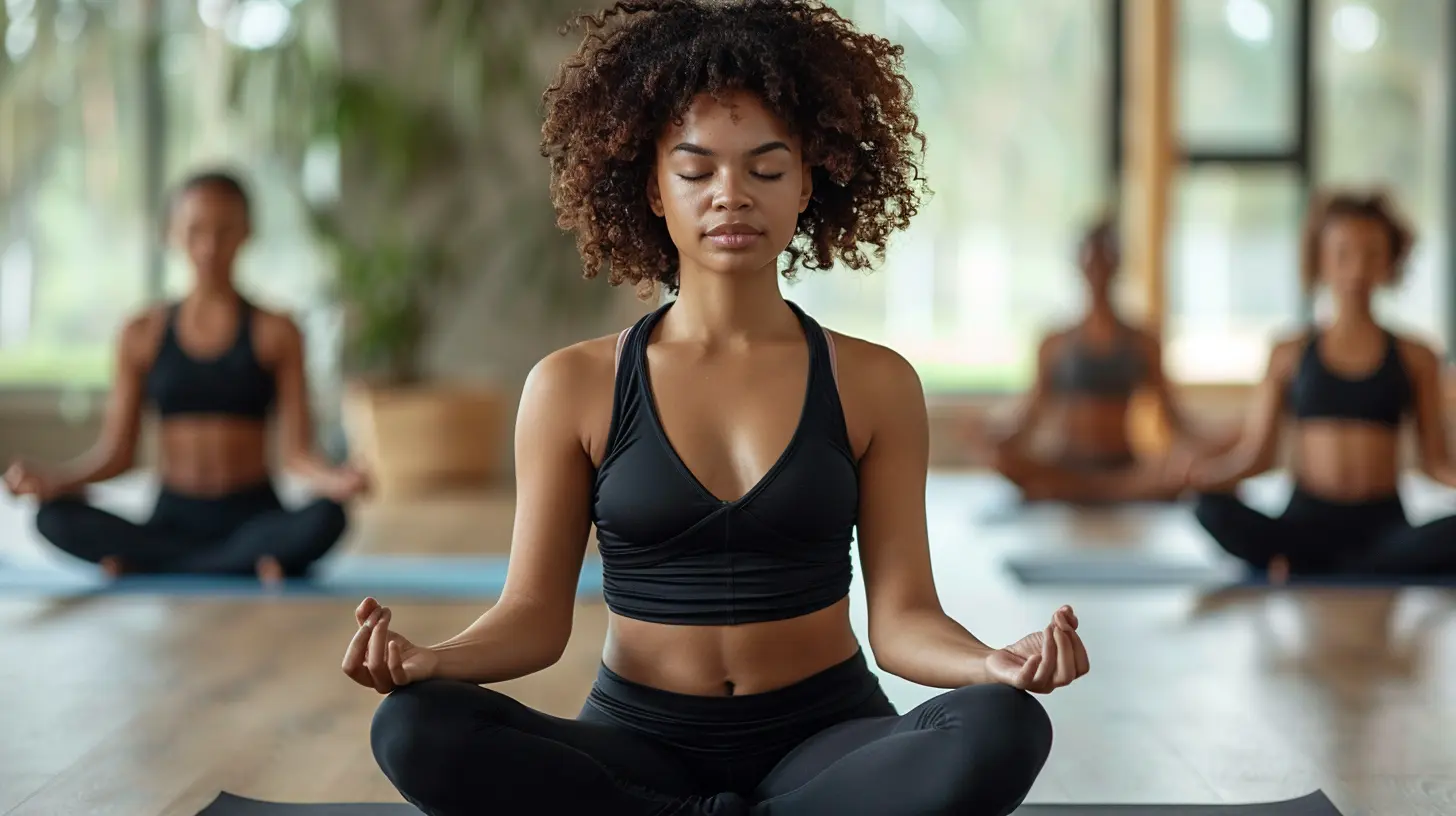31 December 2024
Have you ever wondered why yoga instructors emphasize breathing so much? It's not just about taking in oxygen; it's about tapping into the very essence of life—your breath. That’s where Pranayama comes in. This ancient practice, often referred to as the "art of breath control," is a powerful tool that takes your yoga practice from ordinary to extraordinary.
But pranayama isn’t just about breathing in and out. It’s about syncing your breath with your body and mind. Think of it as the secret sauce to unlocking deeper connections, improved focus, and better health. Now, let’s dive into the transformative power of pranayama and see how it can supercharge your yoga practice.
What is Pranayama, Really?
First off, let’s break down the word itself—"Pranayama." It's derived from two Sanskrit words: "prana", meaning life force or vital energy (basically, the energy that keeps you alive), and "ayama", meaning to extend or control. Put together, pranayama is the practice of controlling and expanding your life force through breath.But let’s not overcomplicate things. At its core, pranayama is about conscious breathing. It’s a way to draw awareness to something you probably take for granted every single day—your breath. And trust me, once you start paying attention to it, the results can feel almost magical.
Why Breath Matters in Yoga
Ever tried holding a yoga pose and felt your muscles tremble as if they were about to give up? Or maybe you’ve rushed through your vinyasa without giving much thought to your inhalations and exhalations. Here’s the thing: your breath can either amplify your yoga practice or hold it back.When you learn to control your breath, your body responds. You manage stress better, stretch deeper, and feel more balanced. In fact, it’s no exaggeration to say that your breath is the bridge between your mind and body. Without it, yoga becomes just a series of physical postures. With it, yoga becomes an art.
The Science Behind Pranayama’s Magic
Okay, let’s geek out for a second. Did you know that pranayama directly impacts your nervous system? When you practice slow, conscious breathing, you activate your parasympathetic nervous system—also known as your "rest and digest" mode. This helps lower your heart rate, reduce cortisol levels, and promote relaxation.On the flip side, certain pranayama techniques (like kapalabhati or Bhastrika) stimulate your sympathetic nervous system, boosting your energy levels and sharpening your focus. So, depending on the type of pranayama you practice, you can either calm yourself down or pump yourself up. Pretty cool, right?
The Benefits of Pranayama
If you’re wondering what all the fuss is about, let me just list out a few of the ways pranayama can enhance your yoga practice—and your life.1. Deepens Your Mind-Body Connection
Pranayama teaches you to stay present. When you're tuned into your breath, you're less likely to get distracted by random thoughts or external noise. It's like putting a "Do Not Disturb" sign on your mind during yoga.2. Boosts Flexibility
Ever noticed how your muscles relax more when you exhale deeply? Conscious breathing sends the signal to your body that it’s safe to let go, allowing you to stretch deeper into poses without forcing it.3. Reduces Stress
One of the biggest benefits of pranayama is its ability to chill you out. When you're breathing deeply, you're literally telling your brain, "Hey, we’re safe. No need to panic." And let’s be real—who doesn’t need an extra dose of calm?4. Enhances Focus and Clarity
Ever feel mentally "foggy" during your yoga practice? Pranayama clears the haze. By focusing on your breath, you naturally become more focused and grounded. Think of it like resetting your brain to factory settings.5. Increases Lung Capacity
Breathing exercises strengthen your respiratory muscles, improving lung capacity over time. Whether you're climbing stairs or holding Warrior II forever, pranayama makes it easier to breathe through the tough moments.6. Balances Your Energy
Feeling sluggish? Try an energizing pranayama like kapalabhati. Feeling wired? Opt for something calming like Nadi Shodhana. Your breath is like a dimmer switch for your energy levels—you just need to know how to adjust it.Types of Pranayama to Try in Your Practice
Alright, let’s talk about the fun part—actual techniques you can incorporate into your yoga routine. Here are a few popular pranayama practices to get you started.1. Nadi Shodhana (Alternate Nostril Breathing)
This is the classic "calm-down" technique. It balances the two hemispheres of your brain and reduces stress like a charm. Perfect for winding down after a long day.How to do it:
- Sit comfortably.
- Close your right nostril with your thumb and inhale through your left nostril.
- Close your left nostril with your ring finger and exhale through your right nostril.
- Repeat for a few minutes, alternating sides.
2. Kapalabhati (Skull Shining Breath)
This one’s like a shot of espresso—but way better for you. It’s an energizing breathwork that clears your mind and boosts energy levels.How to do it:
- Sit tall with your hands on your knees.
- Take a deep inhale, then exhale forcefully through your nose while contracting your abdominal muscles.
- Repeat this rhythmic exhalation for 30 seconds, followed by a deep inhale and exhale.
3. Ujjayi (Ocean Breath)
Known for its soothing, oceanic sound, Ujjayi breath is fantastic for flowing through yoga poses. It promotes focus and helps you control your breath during challenging sequences.How to do it:
- Gently constrict the back of your throat, creating a whispery sound as you inhale and exhale through your nose.
- Maintain this breath throughout your practice to stay focused and steady.
4. Bhramari (Bee Breath)
Feeling anxious or overwhelmed? Bhramari is your go-to. The humming sound produced during this technique is incredibly calming.How to do it:
- Close your eyes and place your index fingers on your ears.
- Take a deep breath in.
- As you exhale, make a humming sound like a bee. Repeat for a few rounds.
How to Incorporate Pranayama into Your Yoga Practice
No idea where to start? Don’t worry—you don’t need to overhaul your entire yoga routine. Here’s how you can ease pranayama into your practice:- Before Yoga: Use a relaxing breath like Nadi Shodhana to ground yourself and set your intention.
- During Yoga: Practice Ujjayi breath to stay present and deepen your poses.
- After Yoga: End with a calming pranayama like Bhramari to settle your mind.
The key is consistency. Start small—just 5 minutes of breathwork before or after your yoga session can make a world of difference.
Final Thoughts: Your Breath is Your Superpower
Pranayama isn’t just a yoga add-on; it’s the heartbeat of the practice. When you tune into your breath, you unlock a reservoir of strength, clarity, and peace you didn’t even know you had.It’s like finding the hidden key to a treasure chest—and that treasure is a more vibrant, balanced you. So, the next time you step onto your yoga mat, don’t just move through the motions. Breathe with intention, and watch your practice (and your life) transform.










Seraphis McConkey
This article beautifully underscores pranayama's transformative role in yoga, emphasizing that conscious breathing not only enhances physical practice but also deepens mental clarity and emotional resilience.
February 7, 2025 at 4:04 AM